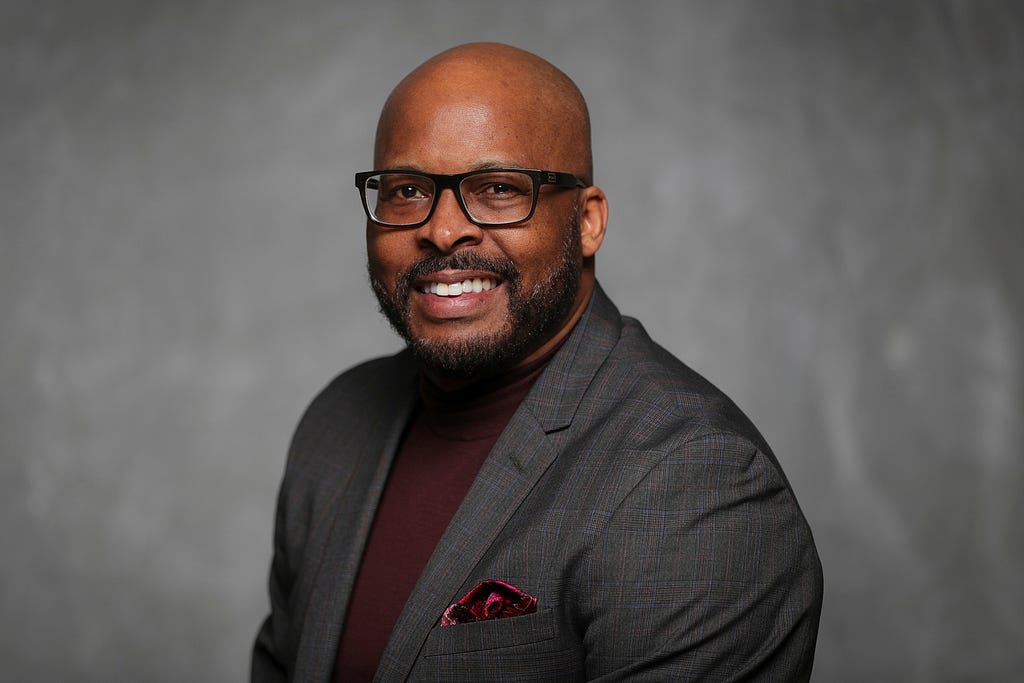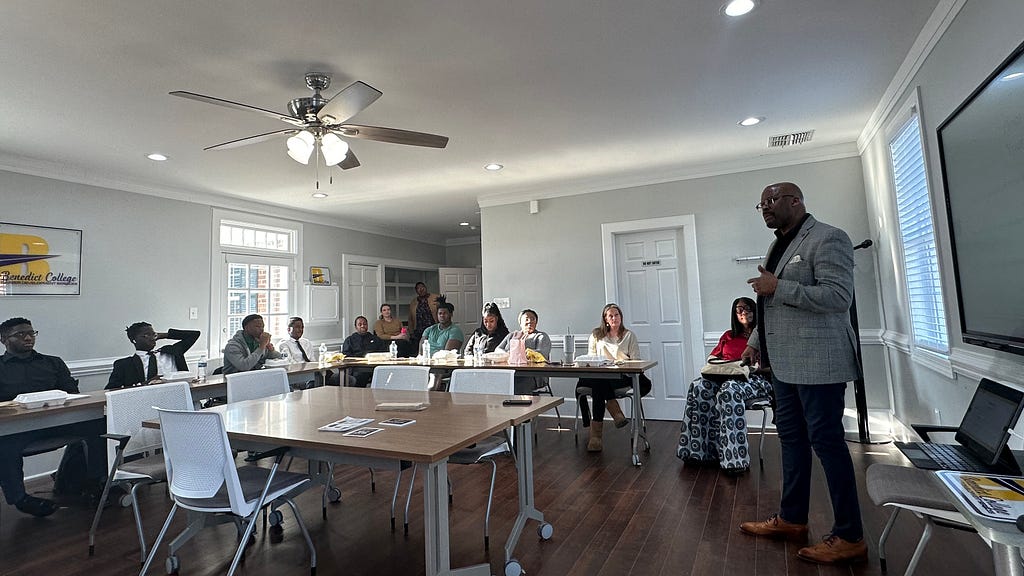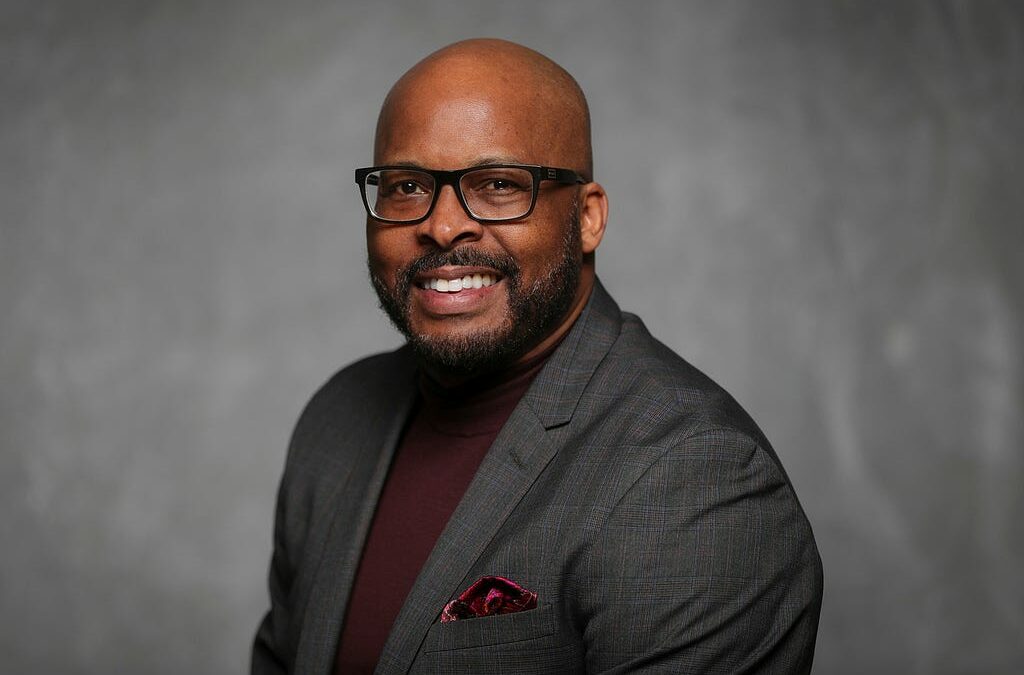Celebrating Diversity: Dr Algerian Hart Of Missouri State University On How To Build Inclusive Communities
An Interview With Vanessa Ogle

Access to resources
To build an inclusive community, individuals must have access to the essentials that allow community stakeholders to thrive as they live, learn and earn.
In a world where diversity is often acknowledged but not always celebrated, we are taking a step forward to highlight the importance of inclusivity in building strong, vibrant communities. This series aims to explore the various facets of diversity — be it racial, cultural, gender-based, or within the differently-abled community — and understand how embracing these differences strengthens our social fabric. As part of this series, we had the pleasure of interviewing Dr. Algerian Hart.
Dr. Algerian Hart is a multifaceted individual whose impactful work spans academia, diversity and inclusion, and advocacy for the undervalued. He currently serves as the assistant to the president for inclusive engagement at Missouri State University (MSU). His role is two-fold — to make the campus a welcoming place for all and to collaborate with others to make Springfield, Missouri, a more welcoming place for students, faculty and staff. Prior to his current role, Hart worked as a kinesiology professor and associate dean of MSU’s Graduate College. He is also professor emeritus at Western Illinois University. Beyond academia, Hart’s athletic background as a former elite athlete and coach has informed his extensive writing on topics, such as marginalized populations seeking educational access and student-athlete advocacy. His contributions extend beyond the university setting, having served as the president for the North American Society for the Sociology of Sport (NASSS). Additionally, he was the chair of the Diversity and Conference Climate Committee for NASSS and on the inclusion committee for the North American Society for Sport Management. He is a member of the Editorial Review Boards for the Journal of Athlete Development and Experience and Sociology of Sport Journal. He authored “The Student Athlete’s Guide to College Success” and co-authored “Diversity, Equity and Inclusion in Sport.” Hart has a doctorate in educational administration and leadership from Washington State University.
Thank you so much for joining us in this interview series. Before we dive into our discussion about celebrating diversity, our readers would love to “get to know you” a bit better. Can you share with us the backstory about what brought you to your specific career path?
I have always wanted to be in a position where I could empower others. Higher education is a tremendous vehicle for access into careers and opportunities that many would not have otherwise. Personally, having been exposed to mentors, coaches and faculty cultivated my desire to work in higher education. This ultimately led me to become a professor and now navigating in the space of higher education administration.
Can you share an interesting or hopeful story where spending time with someone who did not look like you or who was different from you taught you something that has been useful to you?
This has been a regular occurrence throughout my career in higher education. This specific question is tied to my mission and vision of inclusion. I have been intentional in crossing paths with those who are different than me, both on campus and within the communities I have lived in. My takeaways from these encounters have more often than not resulted in a mutual value and respect for how hard people work and how hard people love their communities and family. The tangible encounters from interacting with those who not only look different than you, but also have different faiths, thoughts and traditions is what makes true community. This is always encouraging and energizing to me because it means that the work I continue to do, which is surrounded by valuing others, is central to uplifting the importance of inclusive engagement.
You are a successful leader. Which three character traits do you think were most instrumental to your success? Can you please share a story or example for each?
While I have had successful moments, in order to be identified as a successful leader in higher education, it usually means that one is retired or is changing jobs (LOL). All kidding aside, the desire to empower others is what fuels me daily. Next, being intentional with expressions of valuing others and connecting with them where they are in life. And lastly, the one that has taken me decades to learn is forgiveness. Specifically, this allows for clarity to assist without being limited.
As a former competitive athlete and coach, I have developed a mentality that ties my success to the uplift and accomplishments of others. Specifically, as a leader, when you focus on building pathways that allow for the talent of those around you to thrive, it makes everyone who shares that space comfortable with striving for excellence.
Ok, thank you for that. Let’s now jump to the primary focus of our interview. Can you share a personal story that highlights the impact of diversity and inclusivity in your life or career?
As you can imagine, there are many examples to select from. One that stands out is the mentorship from Dr. Larry Bruya, a former administrator and professor at Washington State University, who took me under his wing and mentored me throughout my graduate schooling. Dr. Bruya’s thought life of “supporting those that differ from you” is a value I have used to help shape my leadership and inclusion philosophy. In the beginning, we shared very little in common from ethnicity, upbringing and ideologies. However, through the cultivation of our friendship, we connected through a desire to empower others and seek pathways to include others with gaining access into higher education.
How do you approach and manage the challenges that arise when working towards creating more inclusive communities?
It is always about seeking avenues to allow space for individuals to have a voice. The key is deciphering when you need to listen to empower someone who has been marginalized versus lending a voice that uplifts and supports the value of someone’s needs when the individual does not have a platform to be seen or heard.
What innovative strategies or initiatives have you implemented or observed that effectively promote the importance of diversity and inclusivity?
Out of MSU’s Office of Inclusive Engagement, we have collaborated with other units across the campus to create the Inclusive Excellence Institute. Our goal was to design a repository of resources that will support scholarship, innovation and service dedicated to uplifting diversity and inclusion within the Ozarks and beyond. The uniqueness of the Inclusive Excellence Institute will allow faculty and staff at MSU to collaborate with external partners seeking to idea share and create a stronger sense of community, which is connected to our Public Affairs mission.
In your opinion, what are the key elements that make a community truly inclusive, and how can these be fostered on a larger scale?
The foundation of a truly inclusive community is access, value and visibility. More specifically, community can be defined as a collective and/or a feeling of fellowship with others, especially sharing common social values, attitudes, responsibilities and goals. Thus, to be inclusive requires that individuals within a shared space are valued and appreciated when decisions are being considered and established in recognizing they are an integral part of the DNA that cultivates community development, uplift and growth.

Based on your experience and research, can you please share “5 Ways We Can Build Inclusive Communities”?
1 . To be seen
This is significant with establishing a sense of value and belonging for individuals who are recognized by simply being present within their communities.
2 . Ujima — collective work and responsibility
Bringing people together who represent different groups that are viewed as equals in terms of power, respect and importance.
3. Access to resources
To build an inclusive community, individuals must have access to the essentials that allow community stakeholders to thrive as they live, learn and earn.
4 . Create safe spaces
Establishing a culture intended to be free of bias and/or threatening actions, ideas and conflict; specifically, creating an environment where its citizens can feel confident they will not be discriminated against, harassed or endure physical harm.
5 . Valuing and encouraging gifts
All members of the community have talents and deserve the opportunity to nurture, develop and share their gifts to make the community prosper. Gifts can be defined as entrepreneurial spirit, faith leadership, engineering and design, teaching, etc.
How do you measure the impact and success of diversity and inclusion efforts, and what changes have you seen as a result of these initiatives?
My thought life is, where empowerment is present then the ability to help others gain a positive emotional and spiritual perspective on their circumstances can be established. I believe this is cultivated through access, inclusion, belonging and valuing otherness.
It is infusing energy and purpose into these ideas that are connected to MSU Public Affairs Pillars of Ethical Leadership, Cultural Competence and Community Engagement.
You are a person of great influence. If you could start a movement that would bring the most amount of good to the most people, what would that be? You never know what your idea can trigger. 🙂
If I could start a movement, it would be centered around empowerment. Specifically, when individuals are empowered, they are uplifted, and their self-worth becomes connected to a larger network called community. This value I refer to can only be fueled through being a stakeholder who has a purpose and a voice that is included in creating change. Ultimately, it would be a movement that sparks Agents of Change.
How can our readers further follow you online?
Individuals can follow me via social media (LinkedIn and Instagram) and through MSU’s Office of Inclusive Engagement.
Thank you for the time you spent sharing these fantastic insights. We wish you continued success in your great work!
About The Interviewer: Vanessa Ogle is an entrepreneur, inventor, writer, and singer/songwriter. She is best known as the founder of Enseo which she and her team grew into one of the largest out-of-home media and connected networks in the world, serving more than 100,000,000 people annually. Vanessa’s talent in building world-class leadership teams focused on diversity, a culture of service, and innovation through inclusion resulted in amazing partnerships and customer relationships. She collaborated with the world’s leading technology and content companies such as Netflix, Amazon, HBO, and Dish Networks to bring innovative solutions to the hospitality industry. Enseo has also held an exclusive contract to provide movies to the entire U.S. armed forces for almost 15 years. Vanessa and her team’s relentless innovation resulted in120+ U.S. Patents. Her favorite product is the MadeSafe solution for hotel workers as well as students and children in their K-12 classrooms. Accolades include: #15 on FAST 100, 50 Fastest Growing Women-Owned 2018–2020, Entrepreneur 360 Best Companies 2018–2020, not to mention the Inc. 500 and then another six times on the Inc. 5000. Vanessa was personally honored with Inc. 100 Female Founder’s Award, Ernst and Young’s Entrepreneur of the Year Award, and Enterprising Women of the Year. Vanessa now spends her time enjoying her children, sharing stories to inspire and give hope through articles and speaking engagements. entrepreneurs-to-be with her articles including her LinkedIN newsletter Unplugged. In her spare time, she writes music with her husband Paul as the band HigherHill, teaches surfing clinics, and trains dogs.
Please connect with Vanessa here on linkedin and subscribe to her newsletter Unplugged as well as follow her on Substack.
Celebrating Diversity: Dr Algerian Hart Of Missouri State University On How To Build Inclusive… was originally published in Authority Magazine on Medium, where people are continuing the conversation by highlighting and responding to this story.

